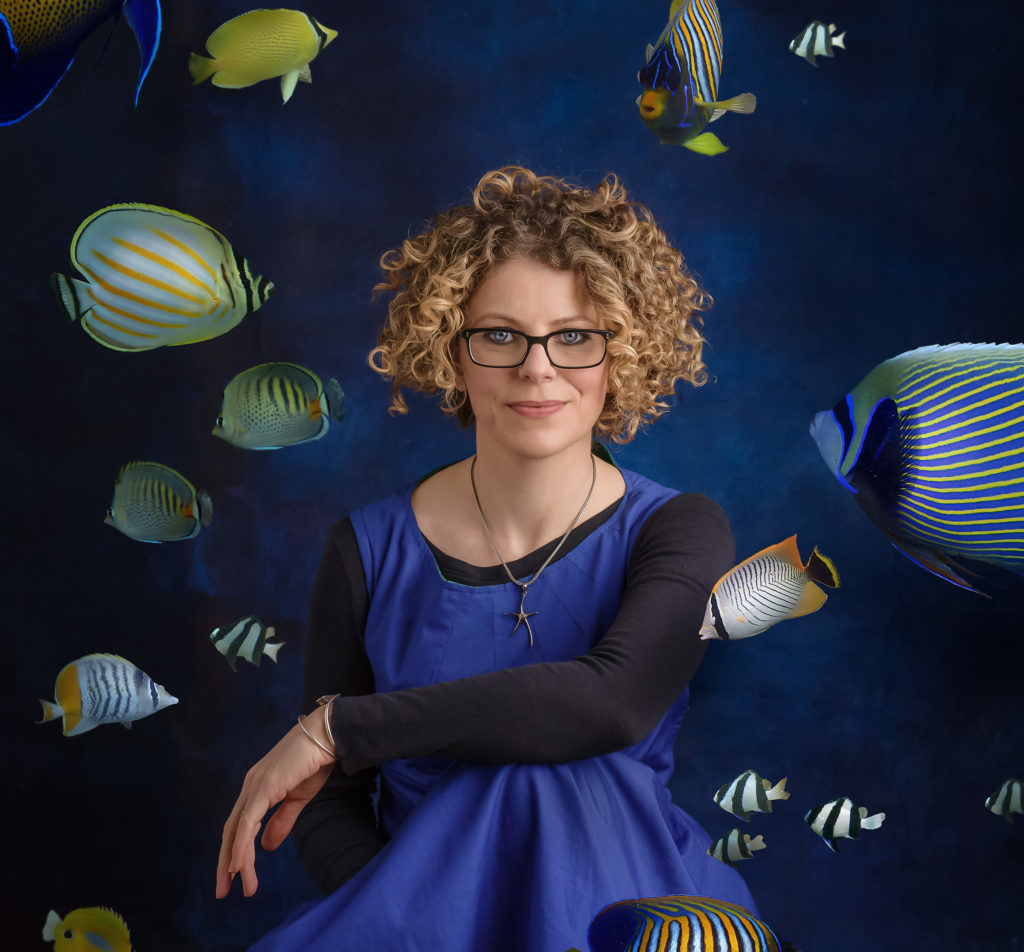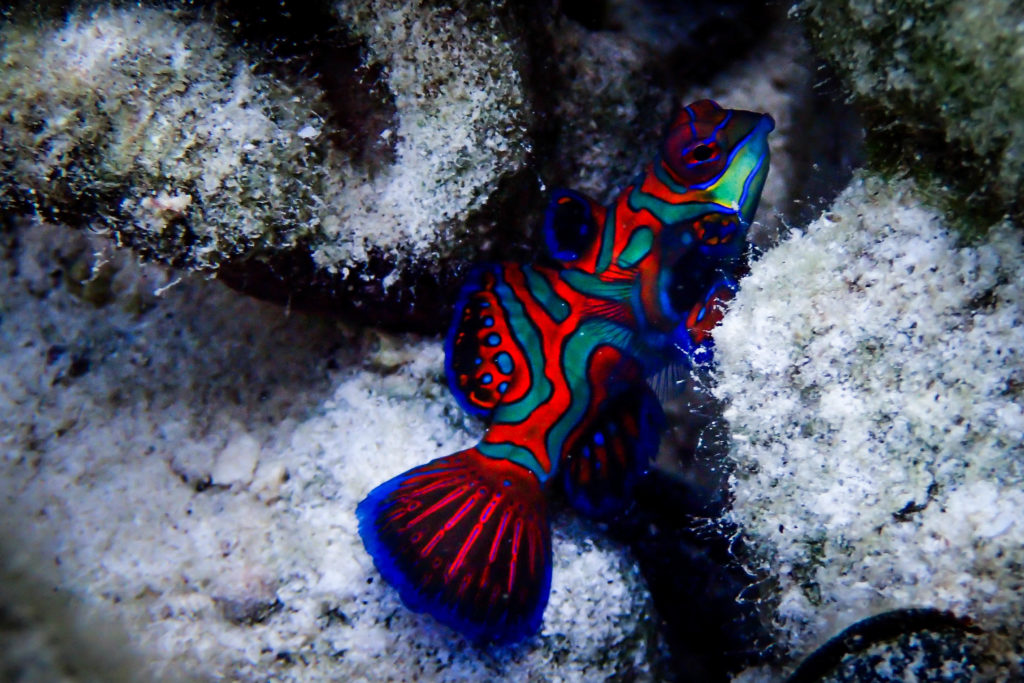I vividly remember a moment, many years ago, when it dawned on me that fish are fascinating. I was fifteen years old on a family holiday in California, which was an incredible treat and the first time I had left Europe. On the shores of Monterey Bay, I stood on a high cliff and looked down into clear, turquoise sea where a sea lion was chasing a shoal of sardines. I was utterly mesmerized by the shimmering ball of fish splitting apart and blending together in cascades, avoiding the lunges of the swift predator, as if all these individual animals were thinking as one intelligent organism.

That encounter sowed a seed in me and the following year I took the chance to train as a scuba diver, first at my local swimming pool then in the chilly, murky waters around Britain, which is where I immersed myself for the first time in the fishes’ realm — and then I was truly hooked. I went on to become a marine biologist and have spent hundreds of hours underwater watching fish and seeing that there’s so much going on in their colorful, complex, intelligent lives.
Over the years I’ve seen how fish get a raw deal. On the whole, people think of them and treat them very differently than other vertebrates. I decided to write Eye of the Shoal as a celebration of fish life, to cast light on the amazing things they get up to, and unhitch them from their reputation as slimy, dull, simple-minded creatures. I hope the book will encourage readers to rethink these animals and the seas and freshwaters they inhabit.
From the stories and facts in Eye of the Shoal, here are a few of my favorites:
Watching fish is good for you
Studies have shown the health benefits of watching fish in public aquariums. Stand in front of a tank of fish and your heart rate and blood pressure will drop (the same effect doesn’t come from watching an empty tank). It hasn’t been tested, but I’m sure that watching fish in the wild is even better for you. Peer into a pond or lake, or take a walk along a river, and contemplate those mesmerizing fish movements. Search in tide pools, or best of all jump right in with a diving mask on and take a look at what’s under the waterline. I am convinced it will do you a lot of good.
Fish are masters of glowing in the dark
Fish have many unique talents, and one of the most dazzling is their ability to light up their bodies and glow in the dark — no other vertebrates can do that. There are at least 1500 species of bioluminescent fish, most of them living in the dark ocean depths. Living in the dusky Twilight Zone (down to 3,000 feet) or in the permanent dark of the Midnight Zone (even deeper), it’s incredibly useful to be able to make light, and fish have evolved this trick dozens of times. They use lights to startle predators, to wink at potential mates and to hide in open water, when there’s nothing to hide behind. Many fish, including the tiny velvet belly lantern shark (fully grown, one would fit in the palm of your hand), have bellies covered in blue light, blending them into the indigo waters of the Twilight Zone and camouflaging their dark silhouette like a cloak of invisibility.
Fish are the only true blue animals
Blue pigments are very rare in nature. Blue shining butterfly wings, human eyes and most other animal blues are not pigments but structural colors. The color comes from the way light refracts and bounces around inside the material. Two species of tiny, tropical fish — the mandarin fish and the picturesque dragonet — are the only animals that have been found to produce a blue pigment, which gets its color by absorbing all wavelengths of light except blue.

Fish undergo extraordinary migrations
It’s not just whales, turtles and birds that undergo amazing seasonal migrations across the planet, but fish also embark on long journeys. Bluefin tuna, salmon, great white sharks, whale sharks, eels and many other species navigate immense distances between spawning and feeding grounds. How they find their way isn’t well understood, but they probably use the Earth’s magnetic fields to help guide them. Freshwater record breakers are giant Amazonian catfish, known as dourada in Portuguese, who are born in streams in the foothills of the Andres mountains and migrate east to the mouth of the Amazon River where they mature, before swimming all the way back to the mountains — a round trip of 7,500 miles.
Fish are much smarter than they’re given credit for
There’s a persistent myth that goldfish have a seven-second memory. Fish in general are not well known for their intelligence, and there’s a long-held assumption that their tiny brains are not capable of higher cognition. It’s not easy measuring the intelligence of these aquatic animals, but through observation and careful studies, scientists are uncovering the truth that fish have highly complex social lives, some use tools, they can count, they can solve problems and learn from each other and they have good memories. All in all, fish show many signs of intelligence.

My favorite smart fishes are the finger-length cleaner wrasse, who live on coral reefs and spend their time picking parasites and dead skin off other fish. This is a vital ecological service (remove cleaner wrasse from a reef and the other fish soon fall sick) and to be a successful cleaner requires the wrasse to have a high level of cognition. Wrasse remember hundreds of individual client fish, who return to be cleaned many times a day. The cleaners learn which fish are potentially dangerous predators and always give them a thorough, honest service. The cleaners distinguish the safer, seaweed-munching herbivores and occasionally cheat on them, taking a bit of nutritious flesh rather than the parasites they’re supposed to remove. The cheating cleaners will always apologize afterwards by rubbing their fins over the disgruntled client, calming and soothing them so they don’t swim off in a huff. Manipulating another fish in such a way is a sure sign that there is a lot going on inside the tiny brain of a cleaner wrasse.
Featured image: a delicate blenny. Image credit Helen Scales.





